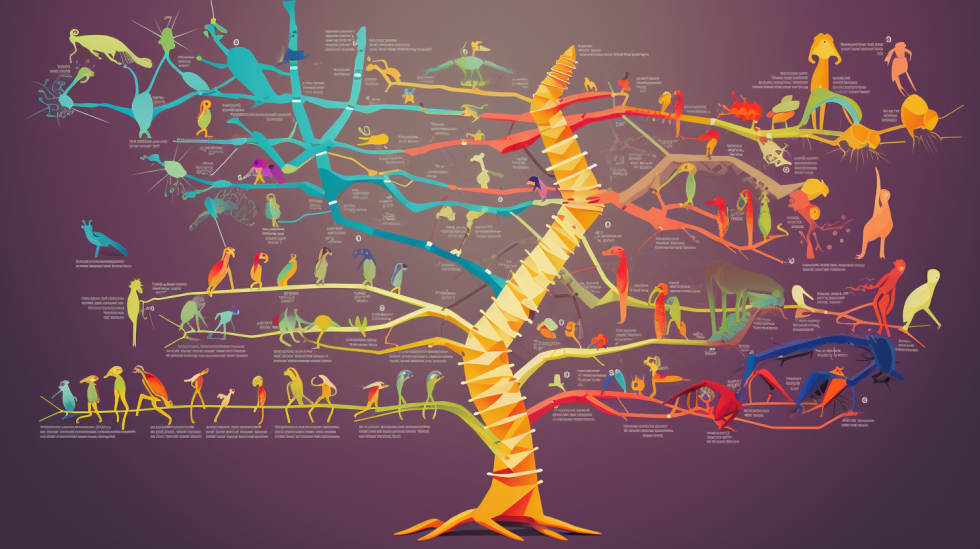The concept of a species is fundamental to the study of biology and evolution, yet defining what constitutes a species has been a subject of ongoing debate and exploration. Among the various species concepts proposed by scientists, the phylogenetic species concept (PSC) has gained significant attention for its focus on evolutionary relationships and shared ancestry. In this discourse, we delve into the phylogenetic species concept and identify a population that serves as an exemplary illustration of this concept. By examining the principles, applications, and implications of the PSC, we can gain a deeper understanding of the intricate interplay between evolutionary history and species designation.

The Phylogenetic Species Concept
The phylogenetic species concept, first introduced by German evolutionary biologist Willi Hennig in the mid-20th century, defines a species as the smallest monophyletic group of organisms that share a common ancestor. In other words, members of the same species are united by a unique evolutionary history, as reflected in their genetic relatedness and shared lineage. This concept places a strong emphasis on evolutionary relationships and seeks to identify species based on patterns of descent rather than merely on morphological or ecological traits.
Principles and Applications of the PSC
- Cladistics and Molecular Data: The PSC is closely aligned with cladistics, a method of analyzing and classifying organisms based on their evolutionary relationships. Molecular data, such as DNA sequences, provide insights into genetic similarities and differences, allowing scientists to construct phylogenetic trees that depict the branching patterns of ancestral lineages.
- Monophyly and Common Ancestry: A monophyletic group, or clade, consists of an ancestral species and all of its descendants. The PSC relies on the concept of monophyly to identify species. A species is considered monophyletic when it includes all the descendants of a common ancestor, but excludes any other organisms.
- Reproductive Isolation: The PSC acknowledges the importance of reproductive isolation in maintaining species integrity. Speciation events occur when populations become reproductively isolated from one another, leading to the accumulation of genetic differences over time. The PSC recognizes that reproductive barriers play a role in defining distinct evolutionary lineages.
Identifying an Exemplar Population
Identifying a single population that serves as the best example of the phylogenetic species concept can be challenging, as each species is embedded within a unique evolutionary history. However, one population that exemplifies the principles of the PSC is the Galápagos finches (Geospiza spp.), famously studied by Charles Darwin during his voyage on the HMS Beagle.
The Galápagos finches are a group of closely related bird species that inhabit the Galápagos Islands in the Pacific Ocean. These finches are renowned for their adaptive radiation, where a single ancestral species diversified into multiple species with distinct beak shapes and feeding habits. This diversification occurred in response to different ecological niches and food sources available on the islands.
The Galápagos finches exemplify the phylogenetic species concept for several reasons:
- Monophyly and Common Ancestry: Genetic studies have revealed that all Galápagos finches share a common ancestry and are descended from a common ancestor. Despite their diverse beak shapes and feeding behaviors, they are still part of the same monophyletic group.
- Evolutionary Relationships: Phylogenetic analyses based on molecular data, such as DNA sequences, have provided insights into the evolutionary relationships among the various finch species. These analyses help map the branching patterns of the finch lineage and identify the common ancestor from which they all originated.
- Adaptive Radiation: The diversification of Galápagos finches into various species with specialized beak shapes for different feeding habits is a classic example of adaptive radiation. This phenomenon underscores the role of ecological factors and natural selection in driving speciation.
- Reproductive Isolation: While interbreeding can occur between some finch species, there are clear cases of reproductive isolation due to differences in beak morphology and behaviors. This isolation contributes to the maintenance of distinct species boundaries.
Implications and Significance
The Galápagos finches serve as an emblematic example of the phylogenetic species concept, showcasing how shared ancestry and evolutionary relationships can lead to the formation of distinct species. The application of the PSC to the Galápagos finches demonstrates the importance of genetic relatedness and evolutionary history in defining species boundaries.
Moreover, the concept of a phylogenetic species recognizes the dynamic nature of species formation and evolution. It acknowledges that species are not fixed entities but are instead products of ongoing processes of divergence and speciation. This perspective aligns with our modern understanding of genetics and evolutionary biology, providing a framework for unraveling the intricate tapestry of life’s history.
Conclusion
In conclusion, the phylogenetic species concept offers a unique lens through which we can view the relationships and evolutionary histories of organisms. The Galápagos finches stand as a remarkable embodiment of this concept, showcasing the interplay between genetic relatedness, adaptive radiation, and reproductive isolation. As we continue to explore the diversity of life on Earth, the phylogenetic species concept provides a powerful tool for deciphering the intricate web of evolutionary connections that bind all living organisms.
